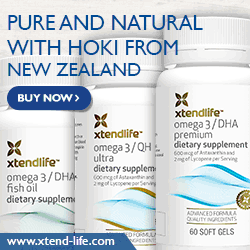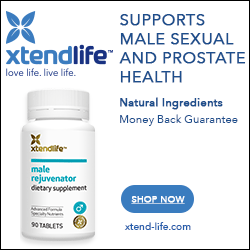Puttin’ Down the Ritz
I was doing my usual “thing” this morning – checking out my favorite blogs while cracking open pistachios (my fave snack) – when my eye was caught by a blog banner ad for “Ritz Crackerfuls.” In addition to a pic of the cracker on the front of the box, there were also images of a stalk of wheat and a chunk of cheese – which illustrated the “Made with Real Cheese!” and “6g of Whole Grain” label claims.
Despite the earthy-but-sophisticated look of the ad, it wasn’t hard to cut through the BS. My first thought was “Oh, spare me.” I mean, c’mon – six grams of whole grains???
Whoopti-doo. The current federal dietary recommendations are for a minimum of 3 ounces of whole grains/day. An ounce is equal to 28.3g. That works out to at least 85 grams of whole grains/day. Six grams is a drop in the bucket.*
Even worse, Nabisco’s product page clearly implies that Ritz Crackerfuls is a great snack choice:
Looking for a satisfying snack that’s perfect in between meals? Try Ritz Crackerfuls! Made with real cheese and 5 grams of whole grain per serving, it’s the snack that will help keep you satisfied until your next meal.
Uh-huh – it’s “perfect” and will keep you “satisfied.” Unlike – say – a piece of fruit, or – God forbid – my (natural) pistachios.
Let’s take closer look at what this “perfect” snack has to offer:
UNBLEACHED ENRICHED FLOUR, WHOLE GRAIN WHEAT FLOUR, PALM AND/OR SOYBEAN AND/OR CANOLA OIL, RESISTANT CORN MALTODEXTRIN, SUGAR, CORN SYRUP SOLIDS, PARTIALLY HYDROGENATED COTTONSEED AND/OR PARTIALLY HYDROGENATED SOYBEAN OIL, MALTODEXTRIN, SEMISOFT CHEESES, CHEDDAR CHEESE POWDER, WHEY, SALT, LEAVENING (CALCIUM PHOSPHATE AND/OR BAKING SODA), HIGH FRUCTOSE CORN SYRUP, CELLULOSE GUM, WHEY PROTEIN CONCENTRATE, LACTOSE, DISODIUM PHOSPHATE, LACTIC AND CITRIC ACIDS, SOY LECITHIN, DRY CREAM, MONOSODIUM PHOSPHATE, NATURAL FLAVOR, CALCIUM PHOSPHATE, ARTIFICIAL COLOR (YELLOW 5, YELLOW 6), CHEDDAR CHEESE, ANNATTO EXTRACT (VEGETABLE COLOR), SODIUM CASEINATE.
Mmmmm… just like mother used to make. 😉
Although it’s a long list, you don’t have to look much past the first ingredient – “unbleached enriched flour” to get a good feel for this product. “Unbleached enriched flour” is simply “code” for “white flour.”
Funny how white flour is the first ingredient of this “whole-grain” cracker, no?
Unfortunately, it’s not so funny when you consider what a common practice this is. Whenever a label claims a product is “multigrain” or “made with whole grain,” it’s a good bet that white flour is one of the main ingredients. You cannot go by cues such as color (which can be faked with caramel coloring) or a “grainy” look (which can be affected by a sprinkle of rolled oats or whole grain flakes brushed on the surface) – you have to look at the ingredients to discern the truth.
Ok, I’ll happily admit that “Crackerfuls” are made with “real cheese,” although this adds very little from a nutritional perspective – the amounts of protein (2g) and calcium (6%) provided by the cheese-derived ingredients are small. And do I need to add that half the cals in each serving of “Crackerfuls” come from fat (7g)?
To put it bluntly, Ritz Crackerfuls’ appearance of wholesomeness is a facade, just like it is for so many other snack foods. There’s precious little nutritional “bang” for your calorie “buck” in a product like this… which doesn’t exactly make it “perfect,” does it?
As noted in an earlier post, “whole grain” doesn’t necessarily mean “good for you.” Products like Ritz Crackerfuls illustrate this point perfectly.
*FWIW, the web site and some product images sez it’s 5g, but other product images and ads say 6g… it’s a distinction without a difference, IMHO, but I figured I’d note it, anyway.




June 29, 2010
Puttin’ Down the Ritz – http://blog.ultimatefatburner.com/2010/0…
June 30, 2010
Another product label designed to “catch” the good intentioned consumer. The problem as we all know is that same consumer wont read the back of the box.
They’ll just put it in the pantry for a “healthy” snack later and probably feel good about themselves.
June 30, 2010
Sad thing is that people are getting conned – I scanned several product reviews and comments. There are plenty of folks who think these things are healthy because of the whole grains and real cheese – when it’s pretty obvious from the nutrition panel that they supply mostly calories. Sure, if you hold yourself to just one, here or there, it’s not a whole lot of cals. But therein lies the problem – most people don’t have much of a margin of error, and even a few hundred cals/day surplus, over time, adds up.